WDR76 degrades RAS and suppresses cancer stem cell activation in colorectal cancer
- PMID: 31362761
- PMCID: PMC6668196
- DOI: 10.1186/s12964-019-0403-x
WDR76 degrades RAS and suppresses cancer stem cell activation in colorectal cancer
Abstract
Background: Stabilization of RAS is a key event for the hyper-activation of Wnt/β-catenin signaling and activation of cancer stem cell (CSC) in colorectal cancer (CRC). WD Repeat protein 76 (WDR76) mediates the polyubiquitination-dependent degradation of RAS in hepatocellular carcinoma (HCC). We investigated whether WDR76 destabilizes RAS and acts as a tumor suppressor inhibiting CSC activation in CRC.
Methods: We generated mice with deletion of Wdr76 (Wdr76-/-) and crosses of Wdr76-/- with ApcMin/+ (Wdr76-/-; ApcMin/+) and compared them with wildtype mice (Wdr76+/+) and ApcMin/+ mice (Wdr76+/+; ApcMin/+), respectively. Intestinal crypt lengthening, tumorigenesis and CSC activation were analyzed by histology, immunohistochemistry, and immunoblotting. CRC cell line was engineered to stably express or knockdown WDR76 or control vector and was analyzed after spheroid culture.
Results: Wdr76-/- mice, with increased Ras level, displayed crypt elongation and hyper-proliferation. Wdr76-/-; ApcMin/+ mice developed more tumors with bigger sizes than ApcMin/+ mice and their tumors showed increased proliferation and CSC activation with elevated RAS and β-catenin levels. In CRC cells, overexpression or knockdown of WDR76 decreased or increased the numbers and sizes of CRC spheroids with inhibition or activation of CSC markers, respectively. In human CRC, lower level of WDR76 was associated with poor patient survival.
Conclusions: In analyses of mice with deletion of Wdr76 and CRC spheroids, we found that RAS stability plays important roles in tumorigenesis by affecting proliferation and CSC activation. Our results suggest that destabilization of RAS by WDR76 is a potential strategy for targeting malignant CRC involving CSC activation.
Keywords: Cancer stem cell; Colorectal Cancer; RAS stability; Tumor suppressor; WDR76.
Conflict of interest statement
The authors declare that they have no competing interests.
Figures
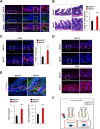
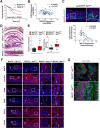
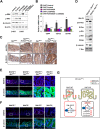
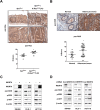
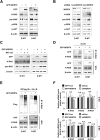
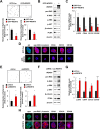
Similar articles
-
TRIB3 Interacts With β-Catenin and TCF4 to Increase Stem Cell Features of Colorectal Cancer Stem Cells and Tumorigenesis.Gastroenterology. 2019 Feb;156(3):708-721.e15. doi: 10.1053/j.gastro.2018.10.031. Epub 2018 Oct 24. Gastroenterology. 2019. PMID: 30365932
-
Role of oncogenic K-Ras in cancer stem cell activation by aberrant Wnt/β-catenin signaling.J Natl Cancer Inst. 2014 Feb;106(2):djt373. doi: 10.1093/jnci/djt373. J Natl Cancer Inst. 2014. PMID: 24491301
-
WDR76 is a RAS binding protein that functions as a tumor suppressor via RAS degradation.Nat Commun. 2019 Jan 17;10(1):295. doi: 10.1038/s41467-018-08230-6. Nat Commun. 2019. PMID: 30655611 Free PMC article.
-
Interaction of the Wnt/β-catenin and RAS-ERK pathways involving co-stabilization of both β-catenin and RAS plays important roles in the colorectal tumorigenesis.Adv Biol Regul. 2018 May;68:46-54. doi: 10.1016/j.jbior.2018.01.001. Epub 2018 Jan 10. Adv Biol Regul. 2018. PMID: 29449169 Review.
-
Interaction between Wnt/β-catenin and RAS-ERK pathways and an anti-cancer strategy via degradations of β-catenin and RAS by targeting the Wnt/β-catenin pathway.NPJ Precis Oncol. 2018 Feb 20;2(1):5. doi: 10.1038/s41698-018-0049-y. eCollection 2018. NPJ Precis Oncol. 2018. PMID: 29872723 Free PMC article. Review.
Cited by
-
Recent Updates on the Significance of KRAS Mutations in Colorectal Cancer Biology.Cells. 2021 Mar 17;10(3):667. doi: 10.3390/cells10030667. Cells. 2021. PMID: 33802849 Free PMC article. Review.
-
miR-224, miR-147b and miR-31 associated with lymph node metastasis and prognosis for lung adenocarcinoma by regulating PRPF4B, WDR82 or NR3C2.PeerJ. 2020 Nov 24;8:e9704. doi: 10.7717/peerj.9704. eCollection 2020. PeerJ. 2020. PMID: 33282547 Free PMC article.
-
The effects of mutant Ras proteins on the cell signalome.Cancer Metastasis Rev. 2020 Dec;39(4):1051-1065. doi: 10.1007/s10555-020-09912-8. Cancer Metastasis Rev. 2020. PMID: 32648136 Free PMC article. Review.
-
A novel machine learning model based on ubiquitin-related gene pairs and clinical features to predict prognosis and treatment effect in colon adenocarcinoma.Eur J Med Res. 2023 Jan 21;28(1):41. doi: 10.1186/s40001-023-00993-z. Eur J Med Res. 2023. PMID: 36681855 Free PMC article.
-
The ubiquitin code of RAS proteins: Decoding its role in cancer progression.iScience. 2025 Jul 1;28(8):113029. doi: 10.1016/j.isci.2025.113029. eCollection 2025 Aug 15. iScience. 2025. PMID: 40703447 Free PMC article. Review.
References
Publication types
MeSH terms
Substances
LinkOut - more resources
Full Text Sources
Medical
Molecular Biology Databases

